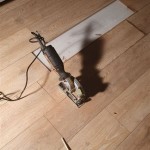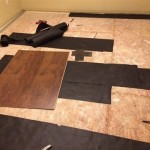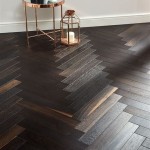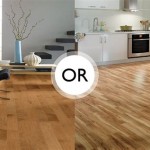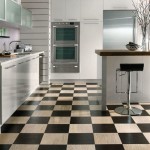Will Double-Sided Carpet Tape Damage Hardwood Floors and Walls?
The question of whether double-sided carpet tape damages hardwood floors and walls is a common concern for homeowners and renters alike. Double-sided carpet tape is frequently used to secure rugs, mats, and other floor coverings to prevent slipping and sliding. It is also used to adhere items to walls, whether for decorative purposes or organization. While the tape offers convenience and a seemingly straightforward solution, its long-term impact on surfaces like hardwood floors and painted walls can be significant. The potential for damage depends on various factors, including the type of tape, the adhesive strength, the duration of application, and the finish of the surface it is applied to. Understanding these factors is crucial to making informed decisions about using double-sided carpet tape and minimizing the risk of harm.
Hardwood floors are particularly susceptible to damage from aggressive adhesives found in many double-sided carpet tapes. The finish, which protects the wood from scratches and moisture, can be compromised by the tape's adhesive. When the tape is removed, it can pull away the finish, leaving behind a sticky residue or even lifting portions of the wood veneer. Similarly, painted walls can suffer from paint peeling or residue buildup, requiring costly repairs and repainting. The severity of the damage typically correlates with the strength of the adhesive and the length of time the tape has been in place.
This article will delve into the specifics of how double-sided carpet tape can affect hardwood floors and walls. It aims to provide insights into the types of damage that can occur, the factors that contribute to the damage, and preventative measures to consider. It also explores alternative methods for securing carpets and items to walls that minimize the risk of damage.
Understanding the Composition of Double-Sided Carpet Tape and its Adhesives
Double-sided carpet tape typically consists of a carrier material, such as paper, cloth, or plastic film, coated on both sides with an adhesive. The type of adhesive used is a critical factor in determining its potential to cause damage. Common adhesives include rubber-based, acrylic-based, and solvent-based adhesives. Rubber-based adhesives are known for their strong initial tack and aggressive bonding properties, making them effective for securing carpets. However, they are also more likely to leave behind a sticky residue and can be difficult to remove without damaging the surface.
Acrylic-based adhesives are generally considered less aggressive than rubber-based adhesives. They offer a good balance of adhesion and removability, making them a safer choice for sensitive surfaces like hardwood floors. However, their adhesion strength might not be sufficient for heavy carpets or high-traffic areas. Solvent-based adhesives are often used in industrial applications and are not typically recommended for residential use due to their strong bonding properties and potential to damage surfaces.
The quality of the adhesive also plays a significant role. Lower-quality tapes often use adhesives that are more prone to drying out, becoming brittle, and leaving behind a stubborn residue. Higher-quality tapes, on the other hand, use adhesives that are designed to remain flexible and remove cleanly. Furthermore, some tapes are specifically designed for use on delicate surfaces and feature a low-tack adhesive that minimizes the risk of damage. It is crucial to carefully review the product specifications and choose a tape that is appropriate for the intended surface.
In addition to the type and quality of the adhesive, the carrier material can also influence the tape's potential for damage. Tapes with a strong carrier material, such as reinforced cloth, can provide extra strength and durability. However, they can also be more difficult to remove and may increase the risk of pulling away the finish or paint. Tapes with a thinner, more flexible carrier material are generally easier to remove but may not provide sufficient holding power for heavier carpets.
Potential Damage to Hardwood Floors from Double-Sided Carpet Tape
Hardwood floors are aesthetically pleasing and add value to a home, but they are also susceptible to damage from a variety of sources, including double-sided carpet tape. The primary concern is the tape's adhesive interacting with the floor's finish. Most hardwood floors are coated with a protective layer, such as polyurethane or varnish, which shields the wood from scratches, moisture, and wear. When double-sided carpet tape is applied, the adhesive can bond to this finish. Upon removal, the tape can lift the finish, resulting in discoloration, peeling, or even complete removal of the protective layer.
Another common issue is the residue left behind by the tape. Rubber-based adhesives, in particular, are notorious for leaving a sticky residue that is difficult to remove. This residue can attract dirt and dust, creating a unsightly buildup that is challenging to clean. Attempting to remove the residue with harsh chemicals or abrasive cleaners can further damage the finish, exacerbating the problem. In some cases, the residue may require professional cleaning or refinishing to restore the floor to its original condition.
In severe cases, double-sided carpet tape can even damage the wood itself. If the adhesive is particularly strong or the tape is left in place for an extended period, it can penetrate the finish and bond directly to the wood fibers. When the tape is removed, it can pull away splinters or even small pieces of the wood, leaving behind a rough, uneven surface. This type of damage is more likely to occur on older floors with a weakened finish or on floors that have been improperly maintained.
The type of hardwood floor can also influence its susceptibility to damage. Softer woods, such as pine, are more prone to damage than harder woods like oak or maple. Floors with a matte finish are also generally more vulnerable to adhesive residue than floors with a glossy finish. It is therefore essential to consider the specific characteristics of the hardwood floor when deciding whether to use double-sided carpet tape and selecting the appropriate type of tape.
Potential Damage to Walls from Double-Sided Carpet Tape
Similar to hardwood floors, painted walls can also suffer from damage when double-sided carpet tape is used to adhere items. The most common issue is paint peeling upon removal of the tape. The adhesive can bond strongly to the paint, and when the tape is pulled away, it can lift the paint along with it, revealing the underlying drywall or plaster. This can create an unsightly patch that requires patching, priming, and repainting.
The type of paint used on the walls can also affect the likelihood of damage. Matte paints, which have a flat, non-reflective finish, are generally more susceptible to peeling than glossy paints. Glossy paints form a harder, more durable surface that is less likely to be damaged by adhesive. Similarly, freshly painted walls are more vulnerable to damage than walls that have had time to cure properly. It is generally recommended to wait at least two weeks after painting before applying any type of adhesive tape.
Residue from the tape is another common problem, especially with rubber-based adhesives. The residue can leave a sticky film on the wall that attracts dirt and dust, making it difficult to clean. Attempting to remove the residue with harsh chemicals or abrasive cleaners can further damage the paint, causing discoloration or even removing the paint entirely. In some cases, the residue may require specialized cleaning products or professional cleaning to remove without damaging the wall.
In addition to paint peeling and residue buildup, double-sided carpet tape can also cause damage to the wall itself. If the adhesive is particularly strong or the tape is left in place for an extended period, it can weaken the bond between the paint and the wall. This can lead to blistering or bubbling of the paint, even after the tape has been removed. In severe cases, the tape can even pull away portions of the drywall or plaster, requiring more extensive repairs.
Textured walls, such as those with orange peel or knockdown finishes, are particularly susceptible to damage. The uneven surface provides more surface area for the adhesive to bond to, making it more difficult to remove the tape without damaging the texture. When removing tape from textured walls, it is essential to proceed with caution and use gentle techniques to minimize the risk of damage.

Pros And Cons Of Applying Rug Tape On Your Floors Carpets Rugpadusa

Types Features And Specific Uses Of Carpet Tape

Types Features And Specific Uses Of Carpet Tape

Roberts Indoor Or Outdoor 15 Ft Double Sided Carpet Tape Roll 50 605 12 The Home

Xfasten Double Sided Carpet Tape Heavy Duty 2 X 30 Yds Residue Free For Area Rugs Over Keep Rug In Place Hardwood

Roberts Indoor Outdoor 3 In X 15 Ft Double Sided Carpet Tape Roll 50 605 12 The Home

Xfasten Double Sided Carpet Tape Heavy Duty 2 X 30 Yds Residue Free For Area Rugs Over Keep Rug In Place Hardwood

Pros And Cons Of Applying Rug Tape On Your Floors Carpets Rugpadusa

Double Sided Carpet Tape

Using Double Sided Carpet Tile Tape To Install Wall Panels For Interio All Flooring Now
See Also

